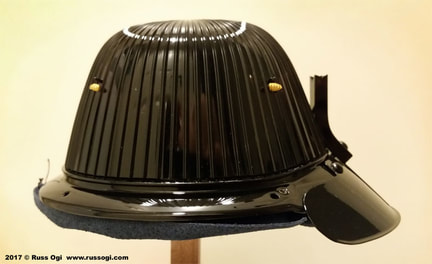
If you haven't already, please have a look at my previous Samurai armor blogs where I talk a bit about traditional armor and how traditional design influences my Samurai armor designs.
And please follow along my build diary as I continue the construction of this armor replica. You can find my diary here at the Model Space Forum. My build diary focuses on the details of the actual build process.
On to the crown or hachi as it is known in Japanese.
The hachi is part of the most iconic section of the Samurai armor - the kabuto (helmet). It is a key part of the silhouette of the helmet and suit. Traditionally, the hachi is built using wedge shaped sections of metal attached together. Generally, these plates run vertically.
The shape of the hachi is an element of the Samurai armor that sees quite a bit of variation historically and in my own designs.
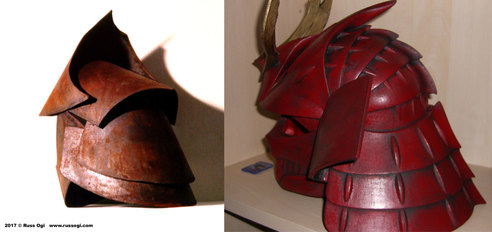 Steel helmet (left) 3D printed helmet (right)
Steel helmet (left) 3D printed helmet (right) In earlier designs, I ran them horizontally partially in an attempt to differentiate my designs from traditional armor. This is a design choice I started using when working with metal.
My design choice was driven by a decision to differentiate my helmets from traditional armor and reinforce the idea that I am not creating replica armor but extending or continuing the traditional armor design. However, with a few of my more recent designs, I decided to mimic the vertical plates of traditional kabuto.
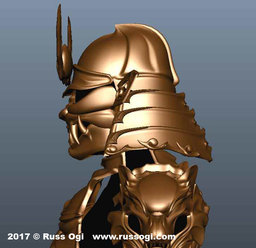
I thought the momonari shape was very fitting considering the theme for this armor. The Momotaro armor is based around the Japanese folk tale "Momotaro". The title translates to Peach Boy.
The momonari hachi is distinctly different from the bowl shape of Date Masamune's kabuto.
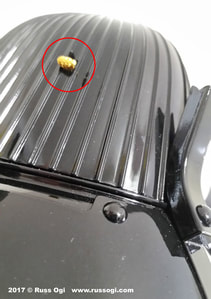
The Hibiki-no-ana and shiten-no-byo (pictured right) are a good examples. Not much information about their purpose is included in the model's documentation.
These are spikes and small holes with lacing. There are four sets of these around the midsection of the hachi.
These elements are decorative but I believe they originally had some association to the shinobi-no-o or chin strap. I haven't been able to fully confirm that though.
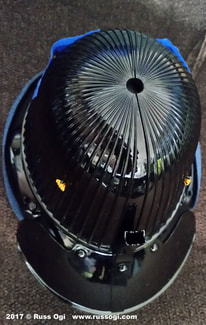
On the model, the hole is present but the tehen-no-kanamono is not.
I have seen historical armor missing the tehen-no-kanamon but usually because it was broken off or otherwise lost but not a kabuto made without one.
Please share any thoughts you have about armor design or information you might have about Japanese kabuto in the comments below. I would especially love to hear from those who are knowledgeable about armor and Samurai armor.

 RSS Feed
RSS Feed